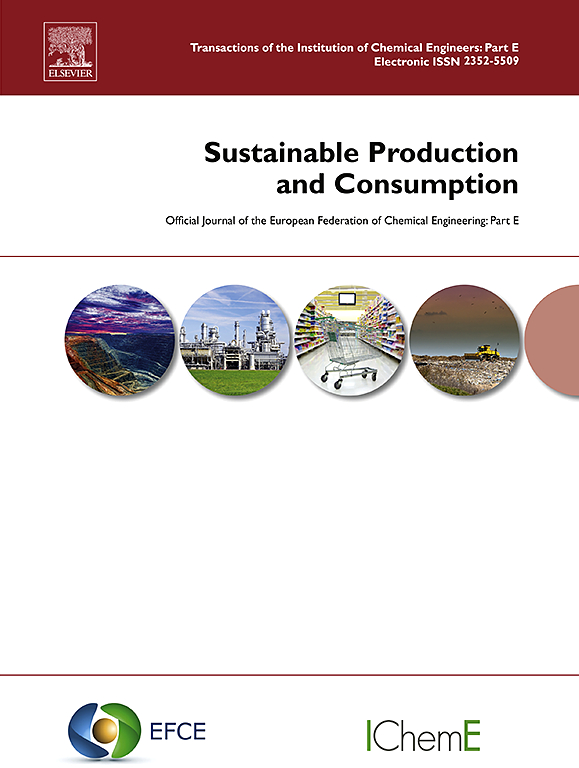确定德国炼钢业及其价值链的社会热点
IF 9.6
1区 环境科学与生态学
Q1 ENVIRONMENTAL STUDIES
引用次数: 0
摘要
钢铁生产是高度材料和能源密集型行业。由于该行业在全球范围内采购大量原材料,因此对炼钢过程及其价值链的可持续性进行评估的必要性与日俱增。本文旨在通过确定与德国初级钢价值链和生产相关的社会热点,对社会层面进行调查。为此,本文进行了文献综述,并采用社会生命周期评估(S-LCA)方法,对 1 吨热轧卷钢的生产进行了社会热点评估。德国钢铁行业的进口数据与社会热点数据库中的社会数据相结合,从而全面了解与钢铁价值链和生产相关的社会风险和热点问题。文献综述发现,S-LCA 在钢铁行业的应用程度总体较低,影响子类别和评估指标差异很大。社会热点评估显示,德国钢铁行业价值链中存在大量社会风险。这些风险主要涉及工人的健康和安全、非本地化和移民、非物质资源的获取、强迫劳动以及社会福利/社会保障。其中,铁矿石和煤炭采掘业是社会热点。根据文献综述和社会热点评估的结果,建议在对包括价值链在内的炼钢业进行全面的 S-LCA 研究时考虑以下影响子类别:工人健康与安全、结社自由与集体谈判、外迁与移民、强迫劳动。此外,建议优先收集 16 项指标的原始数据,这些指标在多个被评估国家和部门中被确定为高风险或极高风险。本文章由计算机程序翻译,如有差异,请以英文原文为准。
Identifying the social hotspots of German steelmaking and its value chain
Steel production is highly material and energy intensive. As the industry sources large amounts of raw materials globally, the need to assess the sustainability dimensions of the steelmaking process and its value chain is increasing. This paper sets out to investigate the social dimension, by identifying social hotspots tied to the value chain and production of primary steel in Germany. To achieve this, a literature review is conducted, and the Social Life Cycle Assessment (S-LCA) methodology is applied in the form of a social hotspot assessment for the production of 1 t of hot rolled steel coil. Import data for the German steel industry are combined with social data from the social hotspot database, to gain an comprehensive overview of social risks and hotspots tied to the value chain and production of steel. The literature review finds the application of S-LCA in the steel industry to be low overall, with great variety in impact subcategories and indicators assessed. The social hotspot assessment shows a high number of social risks tied to the value chain of the German steel industry. These relate primarily to worker health and safety, delocalization and migration, access to immaterial resources, forced labour, and social benefits/social security. In particular, the extractive industries of iron ore and coal are established as social hotspots. Based on the findings of the literature review and the social hotspot assessment, it is recommended that the following impact subcategories be considered in a full scale S-LCA study on steelmaking including the value chain: Worker health and safety, freedom of association and collective bargaining, delocalization and migration, and forced labour. Furthermore, it is recommended to prioritize the collection of primary data on 16 indicators, that are identified as high risk or very high risk across multiple assessed countries and sectors.
求助全文
通过发布文献求助,成功后即可免费获取论文全文。
去求助
来源期刊

Sustainable Production and Consumption
Environmental Science-Environmental Engineering
CiteScore
17.40
自引率
7.40%
发文量
389
审稿时长
13 days
期刊介绍:
Sustainable production and consumption refers to the production and utilization of goods and services in a way that benefits society, is economically viable, and has minimal environmental impact throughout its entire lifespan. Our journal is dedicated to publishing top-notch interdisciplinary research and practical studies in this emerging field. We take a distinctive approach by examining the interplay between technology, consumption patterns, and policy to identify sustainable solutions for both production and consumption systems.
 求助内容:
求助内容: 应助结果提醒方式:
应助结果提醒方式:


